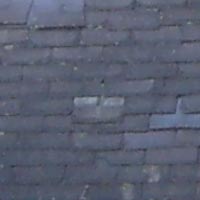Samsung i7 Review
Review Date: July 26th 2007
Author: Mark Goldstein
Leave a comment about this Review
|
Image Quality
All of the sample images in this Review were taken using the 7.2M JPEG mode, which gives an average image size of around 3Mb.
Noise
There are 6 ISO settings available on the Samsung i7 which you can select at any time if the camera is in the normal shooting mode. There is no discernible noise at the slowest settings of ISO 80 and 100, as you would expect, but noise is already starting to appear at ISO 200. There is quite obvious noise at ISO 400, along with blurring of detail, and by ISO 800 it is very obvious. ISO 1600 is completely unusable, looking good on the spec sheet, but terrible in reality. Here are some 100% crops which show the noise levels for each ISO setting:
ISO 80 (100% Crop) |
ISO 100 (100% Crop) |
 |
 |
ISO 200 (100% Crop) |
ISO 400 (100% Crop) |
 |
 |
ISO 800 (100% Crop) |
ISO 1600 (100% Crop) |
 |
 |
Sharpening
Here are two 100% crops which have been Saved as Web - Quality 50 in Photoshop. The right-hand image has had some sharpening applied in Photoshop. The out-of-the camera images are a little soft at the default sharpening setting of Normal. You can change the in-camera sharpening level to one of the preset levels (Vivid+, Vivid, Normal, Soft, Soft+) if you don't like the default look.
Original
(100% Crop)
|
Sharpened (100% Crop) |
 |
 |
 |
 |
Chromatic Aberrations
The Samsung i7 handled chromatic aberrations excellently during the review, with very small levels of purple fringing mainly present around the edges of objects in high-contrast situations, as shown in the example below.
|
Example
1 (100% Crop)
|
Example
2 (100% Crop)
|
 |
 |
Macro
The Samsung i7 offers a Super Macro setting that allows you to focus on a subject that is just 1cm away from the camera when the lens is set to wide-angle. The first image shows how close you can get to the subject (in this case a compact flash card). The second image is a 100% crop.
|
Macro Shot |
Macro Shot (100% Crop) |
 |
 |
Flash
The flash settings on the Samsung i7 are Auto, Auto & Red-eye reduction, Fill-in flash, Slow sync, Flash off, Red eye fix. These shots of a white coloured wall were taken at a distance of 1.5m.
|
Flash Off - Wide Angle (28mm) |
Auto Flash - Wide Angle (28mm) |
 |
 |
|
Flash Off - Telephoto (200mm) |
Auto Flash - Telephoto (200mm) |
 |
 |
And here are some shots of yours truly. Both the Auto setting and the Auto & Red-eye reduction option caused a tiny amount of red-eye.
|
Auto |
Auto (100% Crop) |
 |
 |
|
Auto & Red-eye reduction |
Auto & Red-eye reduction (100% Crop) |
 |
 |
Night Shot
The Samsung i7's maximum shutter speed is 16 seconds in Night mode, which is good news if you're seriously interested in night photography. The shot below was taken using a shutter speed of 16 seconds, aperture of f/6.3 at ISO 80. I've included a 100% Crop of the image to show what the quality is like.
|
Night Shot |
Night Shot (100% Crop) |
 |
 |
Overall Image Quality
The Samsung i7's main drawback in terms of image quality is noise, with ISO 400 showing obvious noise and blurring of detail. The noise gets progressively worse as you go from ISO 400 to ISO 800 and finally the completely unusable 1600 setting. The noise at ISO 400 is also clearly evident in a 15x10 inch print. The Samsung i7 handled chromatic aberrations excellently, with limited purple fringing effects appearing only in high contrast situations. The 7.2 megapixel images are just a little soft straight out of the camera at the default sharpen setting, but there are 5 different in-camera sharpening levels to choose from. The night photograph is very good, with the maximum shutter speed of 16 seconds allowing you to capture most night-time opportunities. Macro performance is a stand-out highlight, allowing you to focus as close as 1cm away from the subject, although there is lens distortion and shadowing at such a close distance. The built-in flash worked well indoors, with little red-eye, and good overall exposure. Overall a more than satisfactory performance by the Samsung i7 in terms of image quality.
|
![]() PhotographyBLOG
is a member of the DIWA
organisation. Our test results for the Samsung i7 have been submitted to DIWA
for comparison with test results for different samples of
the same camera model supplied by other DIWA
member sites.
PhotographyBLOG
is a member of the DIWA
organisation. Our test results for the Samsung i7 have been submitted to DIWA
for comparison with test results for different samples of
the same camera model supplied by other DIWA
member sites.
